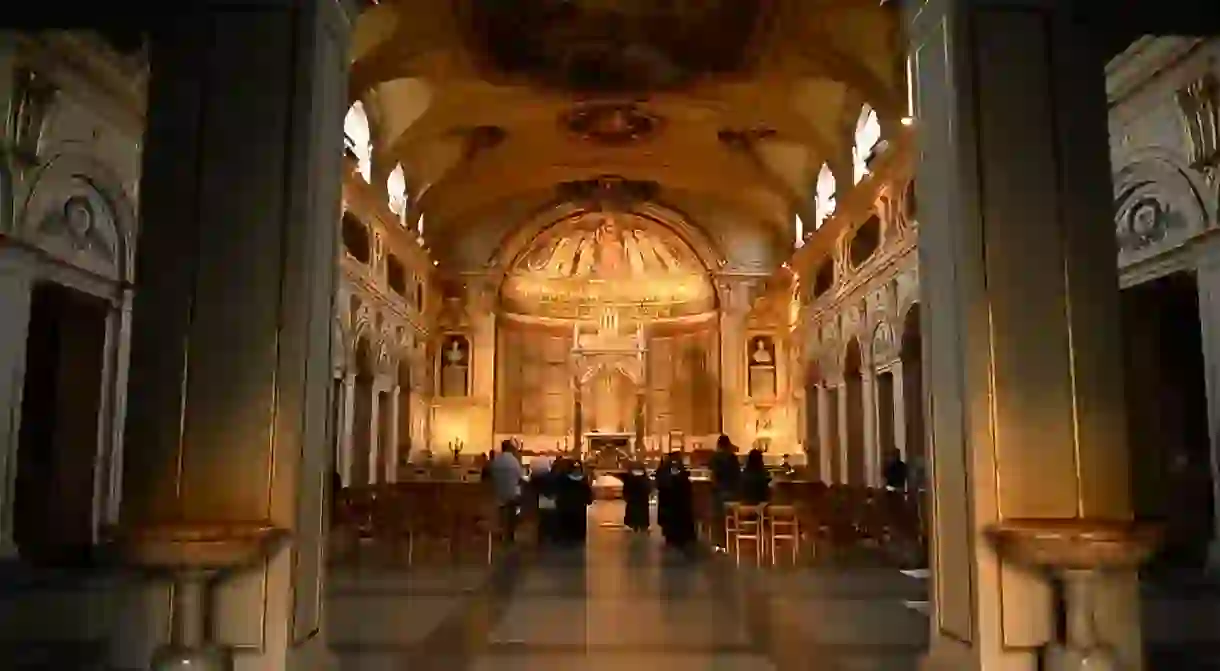A History of Trastevere Santa Cecilia, Rome in 60 Seconds

The Basilica of Santa Cecilia in Trastevere is a 9th-century church said to be built over the home of Saint Cecilia, patroness of musicians and one of ancient Rome’s most venerated Christian martyrs. Found in one of the Trastevere district’s quieter parts, this bright and airy church features a 17th-century façade and is opulently decorated with mosaics, frescos and a striking marble sculpture of Saint Cecilia’s martyred body
The story goes that Cecilia, a young noblewoman who had taken a vow of virginity, was sentenced to death around 300 AD for refusing to worship the Roman gods. When an attempt to suffocate her in the caldarium of her own bathhouse failed an executioner was sent to behead her. She suffered three blows of the sword to the neck and yet still survived for another three days.
Evidence for worship on the site of Santa Cecilia in Trastevere dates back to the 5th century but the present-day church was built under the orders of Pope Paschal I between 817-24 AD. The apparently miraculously preserved body of Cecilia was then exhumed from the Catacombs of San Callisto on the Appian Way and enshrined in the church.
During a 1599 restoration, Cecilia’s tomb was opened and again her body was said to be incorrupt, having undergone no decomposition. Stefano Maderno, a late-Renaissance sculptor, witnessed the exhumation and later carved a marble replica of her body, including those three cuts to the neck.
The striking yet elegant statue now sits at the base of the altar in the church of Santa Cecilia. Above, an intricate 9th-century mosaic adorns the ceiling and features Saints Paul and Peter, as well as Cecilia herself.
For a small fee modern-day visitors can also see the remains of Pietro Cavallini’s fresco The Last Judgment, painted in 1293, as well as the crypt that holds Saint Cecilia’s relics.













